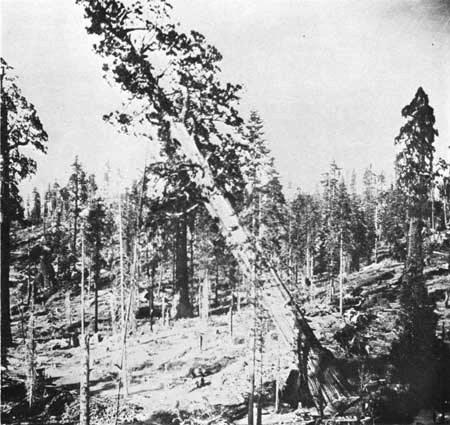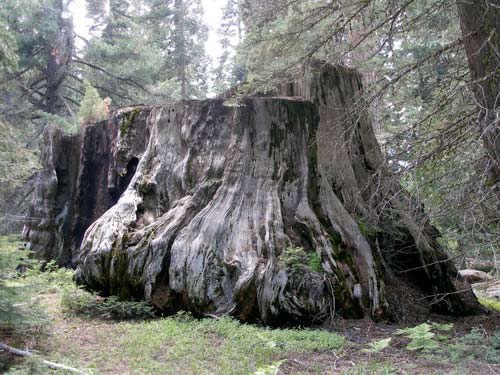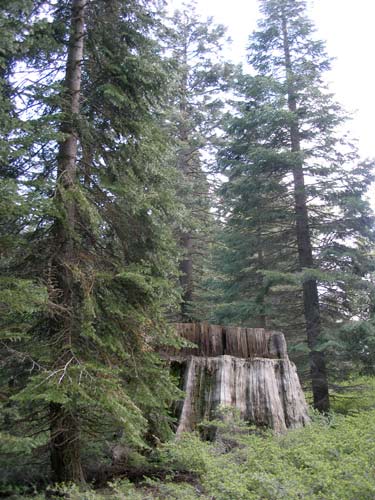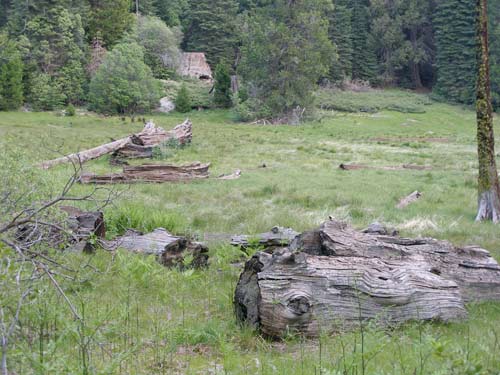
The trail begins near the old park entrance booth which was closed several years ago since the large sequoia next to it became unstable.

Enormous stumps line the trail.


Brooke (lower right) emerges from deep inside the stump.
One well-known stump is of the Mark Twain Tree, a 1,350 year old sequoia that was felled in 1891 after a team of two men spent 13 days sawing it. The tree was over 300 feet tall and measured 90 feet around the base of the trunk.

Two lumberman work inside the undercut.

The Mark Twain Tree falls to its death.
The tree was not used for lumber but rather for world fame. A slab of its 16-foot diameter trunk was sent to the American Museum of Natural History in New York City for display.
Similar giant trees were also felled so that they could be shown in exhibitions. But at America's Centennial Exhibition in Philadelphia in 1875, the tree was called the "California Hoax." No one could believe its enormous size was real... especially since the giant slice had to be split into sections and hauled out of the forest by bull team, revealing the obvious lines where the pieces had been reassembled.

The Mark Twain stump

The top of the severed tree. The picture doesn't do it justice as to its size.


The forest was filled with these enormous stumps.



Compare the size of the stump to the trees around it!
The Shattered Giant shattered into hundreds of useless pieces when the loggers felled it.

The remaining stump...

... and the tree that used to rest upon it.


In the 1880's, this wide, circular meadow housed the Smith Comstock Lumber Mill, an operation which split the timber into fence posts and stakes to be used for vineyards and farms in the Central Valley.

Giant piles of sawdust still cover the ground. Just like the trees, sequoia sawdust also takes a very long time to decompose.


